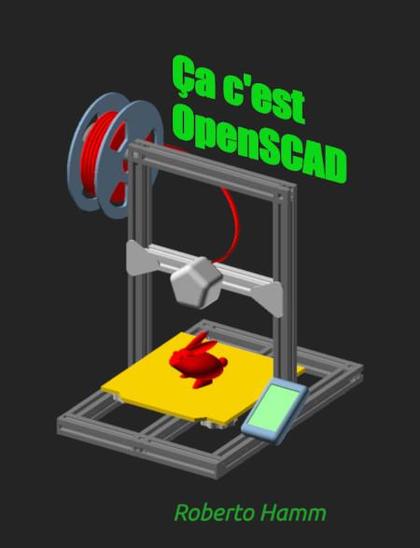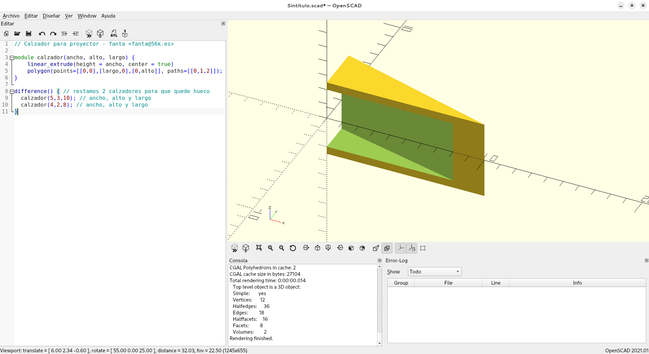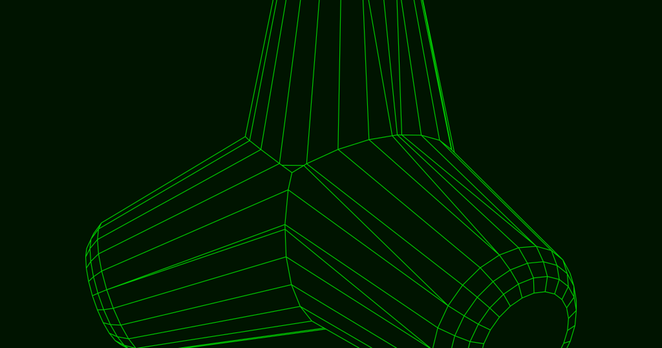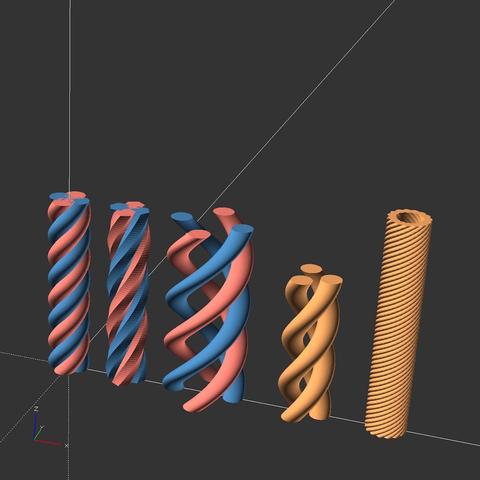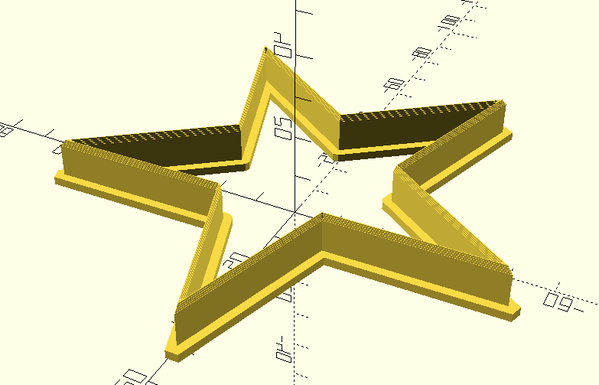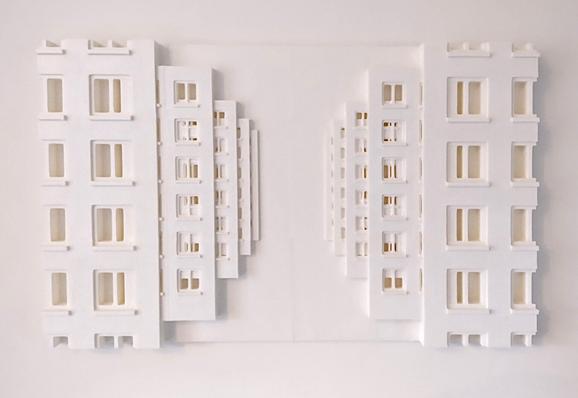New book by Roberto Hamm published (in French): Ça, c’est #OpenSCAD
Con #openscad puedes crear con pocas líneas de código rapidamente algo para imprimir en 3D. En este caso ando probando a imprimir un pequeño calzador.
Lo bueno es que es paramétrico y puedes pasar las medidas a variables si quieres y luego generas el STL de nuevo y a imprimir.
module calzador(ancho, alto, largo) {
linear_extrude(height = ancho, center = true)
polygon(points=[[0,0],[largo,0],[0,alto]], paths=[[0,1,2]]);
}
difference() {
calzador(5,3,10);
calzador(4,2,8);
}
Tetrapod (50 mm high) by scruss — https://www.printables.com/model/1408222-tetrapod-50-mm-high
A variant designed for producing part moulds is in development
Back from vacation and now into #spirals and #ropes created with #OpenSCAD for #3dprinting
This time created as polyhedron from layers of regular polygons. I am still experimenting with this concept. It leads to much faster render times then hull(). Surely this can be done using rotate_extrude as well, but let's try to bend these ropes next.
A small #ModelRailway update. I’ve been battling with the helix, most of it is fine but there are 3-4 specific spots where the plywood simply isn’t flat enough resulting in steam locos in particular struggling when some of the driving wheels lose contact with the track. Not a problem with modern diesels that have drive to both bogies.
The solution is to print a set of spacers that clip onto the helix sides between the vertical supports, forcing the spacing to be consistently 100mm (in my case) and removing any dips or bumps in the plywood.
I’ll produce shorter ones that can be screwed down onto the base and clipped onto the first loop. I might not need them but others might - and I’ll be publishing the files as I do for all my prints.
Should be fairly quick to design in #OpenSCAD and then print off a full set for all the way around the helix. Pics to follow in the next few days.
Cool, ich HABE genug Verständnis von Computergrafik und es waren zehn Minuten Nachdenken in der Mittagspause und neun Zeilen in OpenSCAD 😅
My latest blog post: Designing 3D Printed Sewable Badges
https://mikecoats.com/designing-3dprinted-sewable-badges/
My daughter's going as a pirate for Halloween. Here are the steps I followed to design and print a sewable cap badge for her Tricorne.
"This used to be a street before the war"
See https://www.postminart.co.uk/276/this-was-a-street-before-the-war/
#3dprint #acrylic #openscad #geometricart #abstraktekunst #brutalism #sculpture #relief #art
My highly technical #OpenSCAD program to make a #3Dprint cassette belt:
// Belt length in mm when it's pulled flat and straight; half the circumference.
half_circumference = 120;
thickness = 1;
$fa = 1;
$fs = 0.5;
belt_diameter = (half_circumference * 2 * 0.95) / PI;
difference() {
cylinder(thickness, d=belt_diameter, center=true);
cylinder(thickness * 2, d=belt_diameter - thickness * 2, center=true);
};
#SepTandy #RadioShack #TRS80 #VintageComputing #RetroComputing
